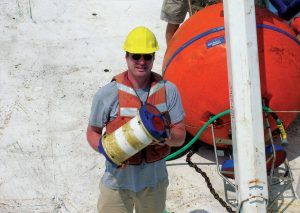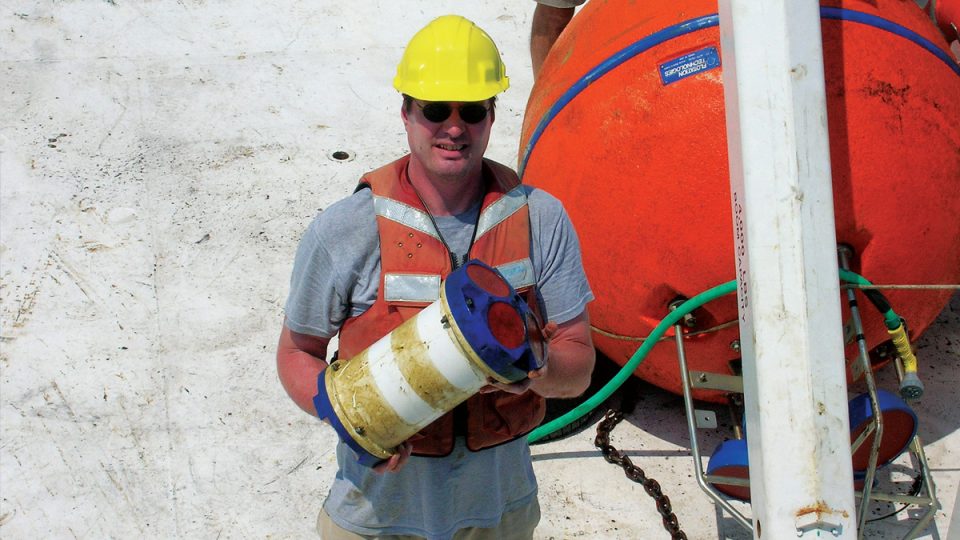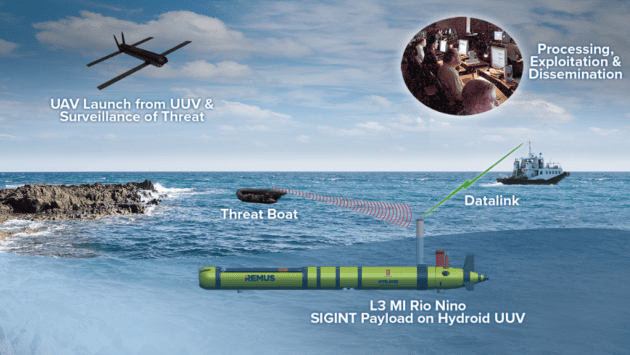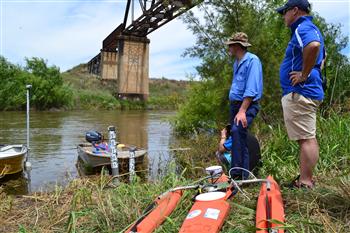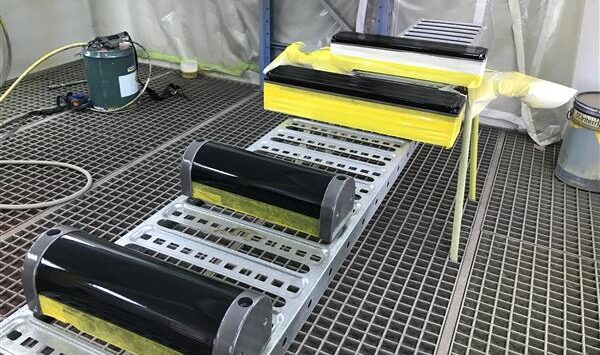Teledyne RDI ADCP Collect Valuable Data During Hurricane Katrina
Ocean Data Technologies Inc. collected data during a Category 5 hurricane event.
Hurricane Katrina struck the Gulf of Mexico in August 2005, resulting in one of the most devastating natural disasters in the US. Prior to this catastrophic event, Ocean Data Technologies Inc. deployed subsurface current meter moorings at the Telemark location, Atwater Valley, Gulf of Mexico. Teledyne RDI’s ADCPs were included on the moorings to monitor ocean currents and conditions before, during and after the hurricane.
The moorings were deployed in 1,390 m of water depth and provided near-continuous vertical profiles from the surface to 750 m deep. Dual ADCPs; a 300 kHz ADCP for sampling high-resolution surface layers and a 75 kHz ADCP for sampling deep currents were mounted on a near-surface buoy. The moorings were recovered 4 days after Hurricane Katrina. During the event, Hurricane Katrina reached peak intensity of 150 knots on August 28th. The hurricane had large wind fields, with hurricane-force winds extending 90 nautical miles from the centre. Katrina’s eye passed was 25.5 nm from the moorings at Telemark on August 28th, with winds exceeding 130 knots.
Data Analysis:
- The advantage of the ADCPs was the units were positioned below the upper thermocline, below the depth of the high-speed, storm induced currents, limiting the movement of the ADCPs on the moorings.
- ADCP Motion: The ADCP motion was not a significant source of bias. The buoy motion was modelled accurately and the mean speed of the buoy/ADCP was approximately 2cm/sec, which had a negligible effect on the measured data.
- Averaging Scheme: The data averaging scheme was deemed reasonable, with ping frequencies sufficient to average out surface wave effects, including sensor motions due to wave accelerations.
- Upper Layer Data Validity: The analysis addressed the validity of data close to the surface. It was found that signal energy for high-frequency waves decayed rapidly with depth, leading to slight bias below approximately 10-15 meters.
- Vertical Velocities: Vertical velocities increased during storm passage, primarily near the surface but also positively at around 50 meters, possibly indicating mixing and turbulence.
- Horizontal Velocities: High vertical and error velocities above 25 meters were observed but did not necessarily invalidate mean horizontal velocity measurements. The sampling scheme effectively averaged through horizontal turbulence, resulting in reasonable measurements below 25 meters.
The deployment of Teledyne’s ADCPs during Hurricane Katrina provided valuable insights into the ocean conditions during a Category 5 hurricane event. The moorings were well positioned to measure the ocean’s response to an intense hurricane at near-peak intensity. The moorings remained relatively stable during the storm, minimising the bias from storm-induced sensor motions. The data collection setup effectively averaged out surface wave effects and provided high-confidence measurements of horizontal velocities below 25 meters.
Read More:
Teledyne RDI ADCP Product Catalogue
